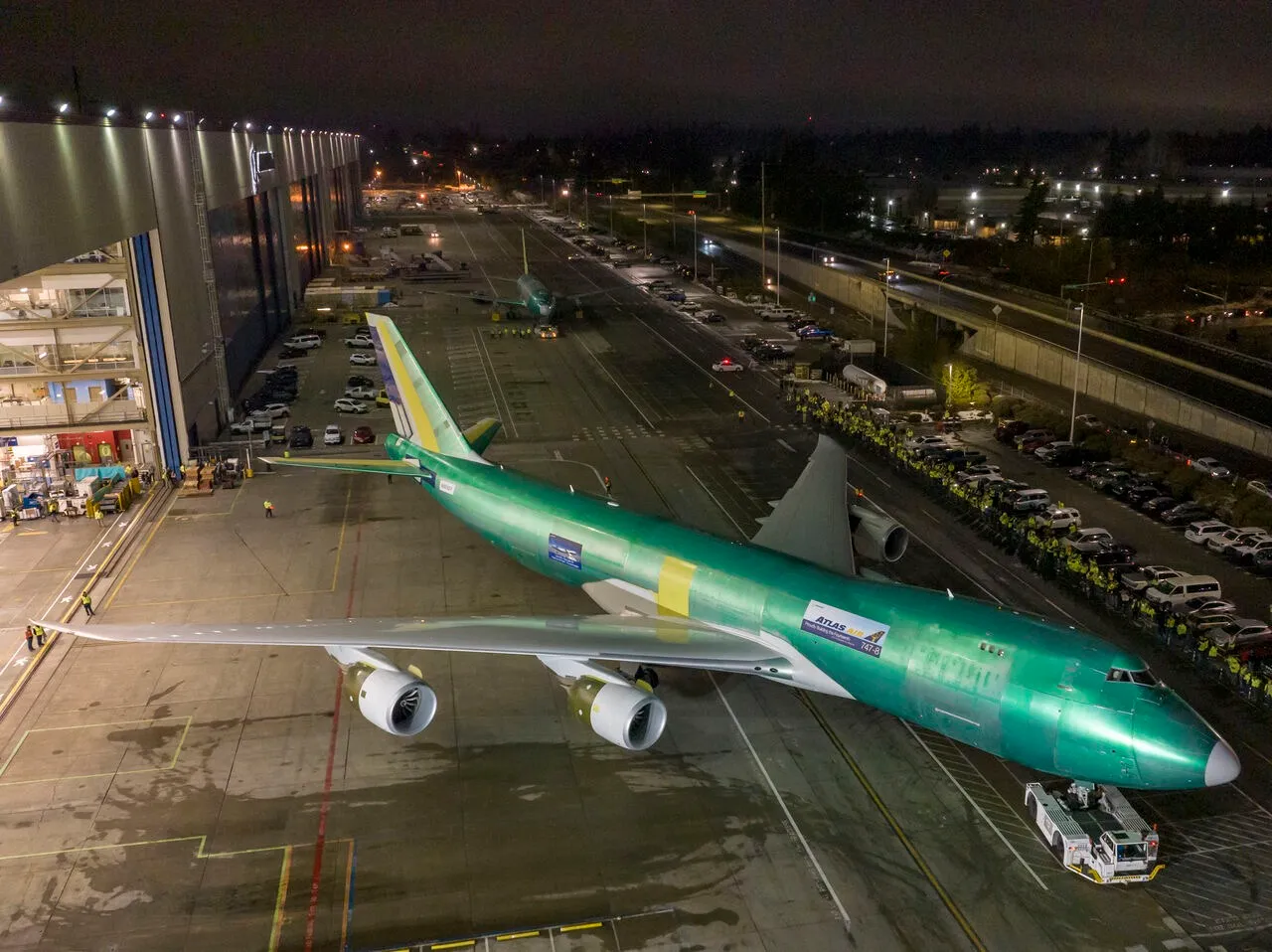After more than 50 years of manufacturing, Boeing last week, on December 6, rolled out its final 747 from the Everett-Paine Field (PAE) assembly line. With the support of Pan Am’s Juan Trippe, the airliner—whose beginnings as a military transport go back to the middle of the 1960s—evolved into the first widebody passenger jet and eventually assumed multiple functions as a freighter and VIP transport.
Source: Boeing
Before being delivered to Atlas Air in early January of next year, the 1574th Boeing 747 will fly a series of test flights. The jumbo aircraft’s Manufacturer Serial Number is 67150, and its future registration number is N863GT.
Join us on TELEGRAM for the Latest Aviation Updates fresh to your phone.
Current Boeing 747 operators.

You might be interested in reading: The Boeing 747 Type That Failed
With 52 Boeing 747s now in service, Atlas Air has overtaken all other Boeing 747 operators in the globe as a result of the global COVID-19 grounding. After completing the final delivery, the fleet will consist of 15 747-8Fs.

Credits: Angelo Bufalino
108 747-8Fs are currently in use with 12 carriers worldwide. The 747-8F’s capacity to transport large loads over great distances has proven popular. According to Boeing, the most recent version of the Jumbo freighter has a 4,325nm (8,010km) range, the ability to carry 293,400lb (133.1t) of revenue-generating cargo, and space on its main deck for 34 cargo pallets.
The 747-production line at Boeing has been gradually shutting for a while. On May 10, 2017, more than five and a half years ago, the last passenger, 747, a 747-8i for Korean Air (HL7644), rolled off the production line. Space will become available at Boeing’s Everett site, located north of Seattle, where the company still builds 767s and 777s.

“For more than half a century, tens of thousands of dedicated Boeing employees have designed and built this magnificent airplane that has truly changed the world. We are proud that this plane will continue to fly across the globe for years to come.”
Kim Smith, Boeing Vice President and general manager, 747 and 767 Programs, said in a statement.
A Boeing 747 story: A Boeing 747 Once Flew With 5 Engines
There are still many years available for active service.

Source: Lufthansa
Even though the Boeing 747’s production is officially ending, commercial airlines are still using them today, such as Lufthansa, Korean Air, Asiana Airlines, and Mahan Air. As well as freighter versions from several cargo operators, such as Atlas Air, UPS, and Cathay Pacific Cargo, so the aircraft won’t entirely vanish from the sky.
Read also: British Airways 747
It is a shame to see the end of such an iconic era.
Despite never being built, the Boeing 747 left behind a very successful legacy lasting more than five decades. It is regrettable to see an iconic era come to an end, but if Boeing closes this chapter, it will open the door to new, perhaps historic, chapters like the one for the Boeing 777X. Given the potential for twin-engined planes, it is unclear whether Boeing will ever create another classical aircraft, but it is not impossible.
Youssef Yahya is the CEO and Founder of Aviation for Aviators. He also serves as the Chief-in-Editor of the platform’s website, where he shares his passion for aviation and provides valuable resources for aviation enthusiasts and professionals alike. His love for aviation and entrepreneurial spirit drive him to create innovative solutions, making Aviation for Aviators a unique resource in the aviation sector.
You might also like:
- What Are Those Small Holes On Airplane Windows?
- Just Stop Oil Activists Demand an End to Fossil Fuels: Taylor Swift’s Private Jet Escapes Damage Despite Vandalism by Protestors at Airport
- Lufthansa Airbus A380 Arrives in Manila for Heavy Maintenance
- The Phonetic Aviation Alphabet
- Previews and Reviews of Upcoming Matches and Seasons
Discover more from Aviation for Aviators
Subscribe to get the latest posts sent to your email.

